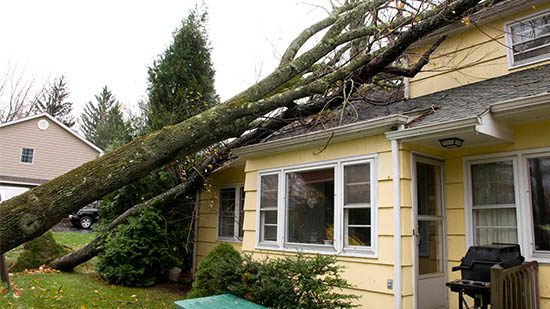Here in Charlotte, we’re no strangers to weather extremes, experiencing everything from thunderstorms and hurricanes to tornadoes and hail. If your roof is older, it’s important to check it for damage in the aftermath of one of these storms. By checking for roof damage once a storm passes through, you’ll be more likely to notice issues that can develop into more serious problems down the road.
But, how do you know what to look for when inspecting your roof? This guide has all the info you need on how to check your roof for signs of damage while staying safe in the process.
Check Your Shingles
First things first, make sure you wait until the storm completely passes before you go out to check your home. Your safety comes before anything else! Once it’s safe to go outside, start by looking at your shingles. The most obvious sign that something is wrong is missing shingles on your roof.
However, even if there are no missing shingles, it doesn’t mean your roof is in the clear. You should also keep an eye out for dented shingles and missing granules on asphalt shingles, which can indicate damage.
Look at the Edges of Your Roof
Around the edges of your roof, you should see a thin material, called flashing. This helps to direct water away from the critical areas of your roof, preventing water from making its way inside and causing leaks.
Storms can damage the flashing, making your roof vulnerable to leaks the next time it rains. If you notice torn, damaged, or missing flashing, you’ll want to contact a roofing contractor as soon as possible.
Check Your Gutters
To start, check to see if your gutters are bent or warped in any way. If they are, they’ll no longer be able to direct water away from your home’s foundation during the next storm. If you don’t see any visible signs of damage to the gutters, it doesn’t necessarily mean they’ve been left unscathed.
While your gutters may look fine from the outside, the inside of them may tell a different story. Check to see if there is debris inside your gutters, causing a blockage. If left alone, water will continue to accumulate in your gutters, putting your home at risk.
Take a Look Inside Your Home
Finally, do a quick inspection inside your home for signs of water damage. For example, you might look for water stains on your walls or ceiling, peeling interior paint, or mold growth. Any of these signs can happen when you have a roof leak.
You should also take a look around your attic. If you notice any signs of moisture in the space, it’s likely that your roof is leaking.
Don’t Overlook Roof Damage
The next time it storms, follow these tips to inspect your home for roof damage so you can take care of the issues before it gets worse. If you notice any of the issues we mentioned above, call in the help of a roofing professional like the SHS Pros team and start your roof repairs. Or, if you’re not comfortable inspecting your roof yourself, we can help with that too. Need a new roof and are unsure what goes into a roof replacement? We’re happy to help you through the whole process!
Whether you need small repairs or a complete roof replacement, your home is in good hands when you choose Southern Home Services. Contact us today to make sure your roof is protected.


